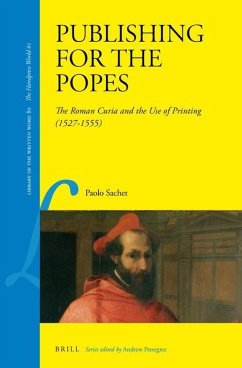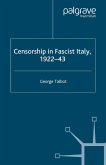In this book Paolo Sachet provides a detailed account of the attempts made by the Roman Curia to exploit printing in the mid-sixteenth century, after the Reformation but before the implementation of the ecclesiastical censorship. Conventional wisdom holds that Protestant exploitation of printing was astute, active and forward-looking, whereas the papacy was inept, passive and reactionary in dealing with the relatively new medium of communication. Publishing for the Popes aims to provide an impartial assessment of this assumption. By focusing on the editorial projects undertaken by members of the Roman Curia between 1527 and 1555, Sachet examines the Catholic Church's attitude towards printing, exploring its biases and tactics.
See inside the book.
See inside the book.
"This book successfully combines the history of the book and religious history. It presents an abundance of detailed information about the people and processes of publication harvested from a wide range of archival, manuscript, printed books, and secondary scholarship, and presents the results in clear prose and detailed footnotes. It is an excellent and original study."
Paul F. Grendler, University of Toronto, emeritus. In: Renaissance Quarterly, Vol. 75, No. 1 (Spring 2022), pp. 276-278.
Paul F. Grendler, University of Toronto, emeritus. In: Renaissance Quarterly, Vol. 75, No. 1 (Spring 2022), pp. 276-278.








